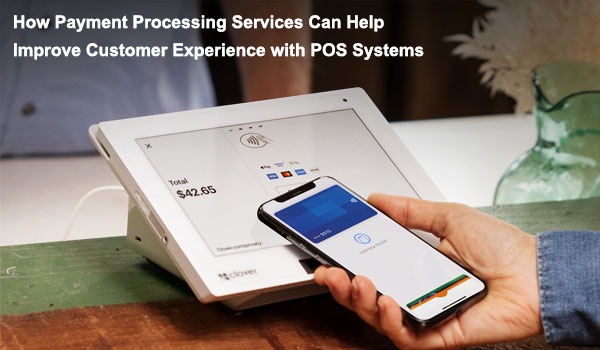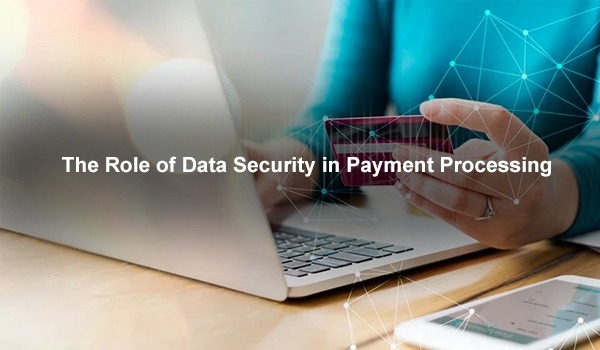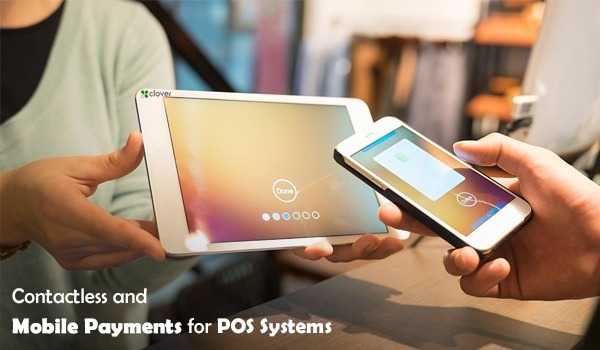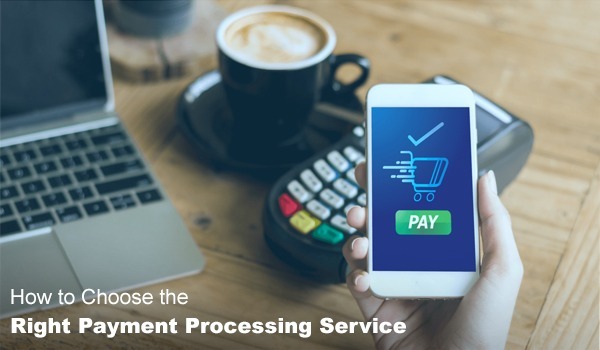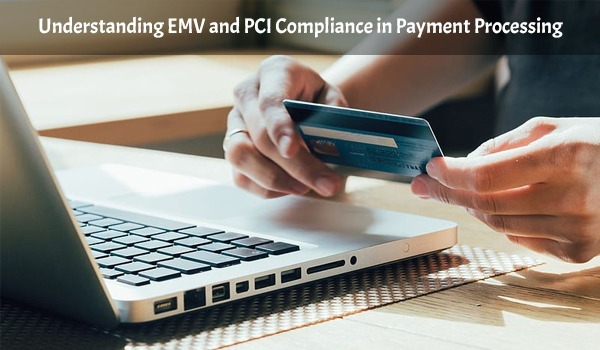
How to optimize your payment processing services for your POS system
Are you looking to enhance the efficiency and effectiveness of your payment processing services for your point-of-sale (POS) system? Optimizing your payment processing plays a crucial role in streamlining transactions, improving customer experiences, and boosting your business's bottom line. In this article, we'll explore the essential steps and strategies to optimize your payment processing services specifically tailored for your POS system.
When it comes to optimizing your payment processing services for your POS system, you have two options to consider: optimizing your existing payment processing setup for your POS system or leveraging the integration of Microsoft RMH (Retail Management Hero) with CardConnect.
Understanding payment processing services
Payment processing services form the backbone of financial transactions in the modern business landscape. By comprehending the intricacies of payment processing, businesses can optimize their operations and provide seamless payment experiences to customers.
Payment processing involves the secure and efficient transfer of funds between a customer and a business. When a customer makes a payment, whether through credit or debit cards, mobile wallets, or other electronic means, payment processing services handle the authorization, verification, and settlement of the transaction.
The process of payment processing consists of several key components. Firstly, there's the payment gateway, a technology that facilitates the secure transmission of payment data between the business, the customer, and the payment processor. The payment gateway encrypts sensitive information, such as credit card details, to ensure its confidentiality.
Next, there's the merchant account, which acts as an intermediary between the business and the payment processor. The merchant account holds funds from customer payments before they are transferred to the business's bank account.
Card networks, such as Visa, Mastercard, and American Express, play a vital role in payment processing. These networks establish the rules and protocols for card transactions, enabling the smooth flow of funds between the customer's bank and the business's merchant account.
Transaction flows encompass the entire sequence of events that occur during a payment transaction, from the initial authorization to the final settlement. This includes steps like card verification, authorization requests, payment captures, and refunds. Optimizing transaction flows can significantly impact the speed and efficiency of payment processing.
Understanding these components and the overall payment processing landscape is essential for businesses seeking to optimize their payment services. By gaining a deep understanding of payment processing services, businesses can make informed decisions about choosing the right payment processor, streamlining transaction flows, enhancing security measures, and leveraging real-time analytics for data-driven insights.
Integration of payment processing with POS systems
Integrating payment processing services with point-of-sale (POS) systems is a game-changer for businesses. This seamless integration streamlines the payment experience, enhances operational efficiency, and improves customer satisfaction.
POS systems are the central hub for processing sales and managing inventory in retail and hospitality industries. Traditionally, separate payment terminals were used alongside POS systems, leading to disjointed processes and potential errors. However, with the integration of payment processing services directly into the POS system, businesses can consolidate their operations and create a more cohesive and efficient workflow.
The benefits of integrating payment processing with POS systems are numerous. First and foremost, it simplifies the payment process for both the business and the customer. Instead of manually entering transaction amounts or switching between different devices, the POS system can seamlessly communicate with the payment processor, automatically initiating transactions and updating inventory records.
This integration also speeds up transaction times. Customers can enjoy a swift and seamless checkout experience, as the payment processing occurs within the POS system itself. This reduces waiting times and enhances overall customer satisfaction, especially during peak hours.
Furthermore, integrated payment processing with POS systems improves accuracy and minimizes errors. By eliminating the need for manual data entry, the likelihood of input errors are significantly reduced. This reduces the risk of chargebacks and other payment-related disputes.
Despite the numerous benefits, there are some challenges and considerations to keep in mind when integrating payment processing with POS systems. Compatibility is a key concern. Not all POS systems and payment processors are compatible with each other. It's crucial to choose a payment processor that offers seamless integration with the specific POS system being used.
Security is another critical consideration. With integrated payment processing, sensitive customer data flows through the POS system. Businesses must ensure that robust security measures are in place to protect customer information and prevent unauthorized access.
Integrating payment processing services with POS systems revolutionizes the way businesses handle transactions. It simplifies the payment process, accelerates transaction times, improves accuracy, and enhances the overall customer experience. By addressing compatibility and security considerations, businesses can harness the full potential of integrated payment processing for their POS systems.
Optimization strategies for payment processing services
To maximize the efficiency and effectiveness of payment processing services for your POS system, implementing optimization strategies is crucial. These strategies aim to streamline transaction flows, enhance security measures, utilize real-time analytics, and optimize payment gateway performance. By following these strategies, businesses can ensure smooth and seamless payment processing experiences for both customers and themselves.
- Choosing the Right Payment Processor: Selecting the appropriate payment processor is the foundation of optimized payment processing. Consider factors such as reliability, security features, pricing models, customer support, and integration capabilities. Choose a payment processor that aligns with your business needs and offers seamless integration with your POS system.
- Streamlining Transaction Flows: Simplifying transaction flows is essential for a smooth payment process. Reduce unnecessary steps and friction by implementing features like one-click payments, autofill of customer information, and automatic inventory updates. Minimize the number of screens and input fields required to complete a transaction, ensuring a quick and hassle-free checkout experience.
- Enhancing Security Measures: Security is of utmost importance in payment processing. Implement robust security measures to protect customer payment data and prevent fraud. Utilize encryption technologies to secure data transmission and storage. Implement tokenization to replace sensitive payment information with unique tokens. Regularly monitor and update security protocols to stay ahead of emerging threats.
- Utilizing Real-time Analytics: Leverage real-time analytics to gain valuable insights into payment processing trends and customer behaviors. Analyze transaction data to identify patterns, detect anomalies, and optimize decision-making. Use analytics to identify potential bottlenecks or areas for improvement in your payment processing workflow.
- Optimizing Payment Gateway Performance: The performance of the payment gateway directly impacts transaction speed and reliability. Optimize the configuration and settings of your payment gateway to ensure fast and stable transactions. Reduce latency by choosing a reputable payment gateway provider and ensuring proper network infrastructure. Regularly monitor and optimize gateway performance to minimize downtime and transaction failures.
By implementing these optimization strategies, businesses can streamline their payment processing services, enhance customer experiences, and drive operational efficiency. Remember to regularly evaluate and update your strategies to adapt to evolving industry trends and customer expectations.
Future trends in payment processing for POS systems
The world of payment processing is constantly evolving, driven by advancements in technology and changing consumer preferences. Staying abreast of future trends in payment processing for POS systems is essential for businesses looking to optimize their payment services and stay competitive. Here are some notable future trends to keep an eye on:
- Mobile Wallets: The popularity of mobile wallets, such as Apple Pay, Google Pay, and Samsung Pay, continues to rise. These wallets enable customers to make contactless payments using their smartphones or smartwatches. Integrating mobile wallet capabilities into POS systems allows businesses to offer convenient and secure payment options, catering to tech-savvy customers.
- Contactless Payments: Contactless payments, which use near-field communication (NFC) technology, are becoming increasingly prevalent. This trend is fueled by the desire for quick, touchless transactions. POS systems that support contactless payments enable customers to complete transactions by simply tapping their payment cards or mobile devices on the POS terminal.
- Blockchain Technology: Blockchain technology holds significant potential for transforming payment processing. Its decentralized nature and secure transaction verification make it an attractive option for enhancing the transparency and security of payments. Blockchain-based POS systems can facilitate faster, more secure, and cost-effective transactions, especially for cross-border payments.
- Biometric Authentication: Biometric authentication methods, such as fingerprint or facial recognition, are gaining traction in payment processing. Integrating biometric authentication into POS systems adds an extra layer of security and eliminates the need for physical payment cards or PINs. This trend enhances convenience and reduces the risk of fraud.
- Artificial Intelligence (AI) and Machine Learning: AI and machine learning technologies are revolutionizing various aspects of payment processing. These technologies can analyze vast amounts of data to detect patterns, identify potential fraud, and provide personalized payment experiences. AI-powered POS systems can offer real-time recommendations, targeted promotions, and customized payment options based on customer behavior.
- Voice-Activated Payments: With the growing popularity of voice assistants like Amazon's Alexa and Apple's Siri, voice-activated payments are on the horizon. Integrating voice recognition capabilities into POS systems allows customers to make payments simply by using voice commands, offering a seamless and hands-free payment experience.
- Internet of Things (IoT) Integration: The integration of IoT devices with POS systems opens up new possibilities for payment processing. IoT-enabled devices, such as smart appliances or wearables, can initiate payments directly from the POS system, creating a connected ecosystem that simplifies transactions and enhances convenience.
Conclusion
Optimizing payment processing services for your POS system is a crucial step towards enhancing the efficiency, security, and overall success of your business. By carefully considering and implementing the right strategies, such as integrating with reputable payment service providers, leveraging advanced technologies, and prioritizing customer experience, you can streamline your payment processes, reduce errors, and provide a seamless checkout experience for your customers. Keep in mind that every business is unique, so it's essential to assess your specific needs and goals before making any optimizations.
Regularly reviewing and updating your payment processing setup will ensure that you stay competitive in the ever-evolving landscape of payments, ultimately driving growth and customer satisfaction for your business. By embracing innovation and integrating solutions like Microsoft RMH with CardConnect, you can stay ahead of the curve and provide a seamless payment experience that sets your business apart.
